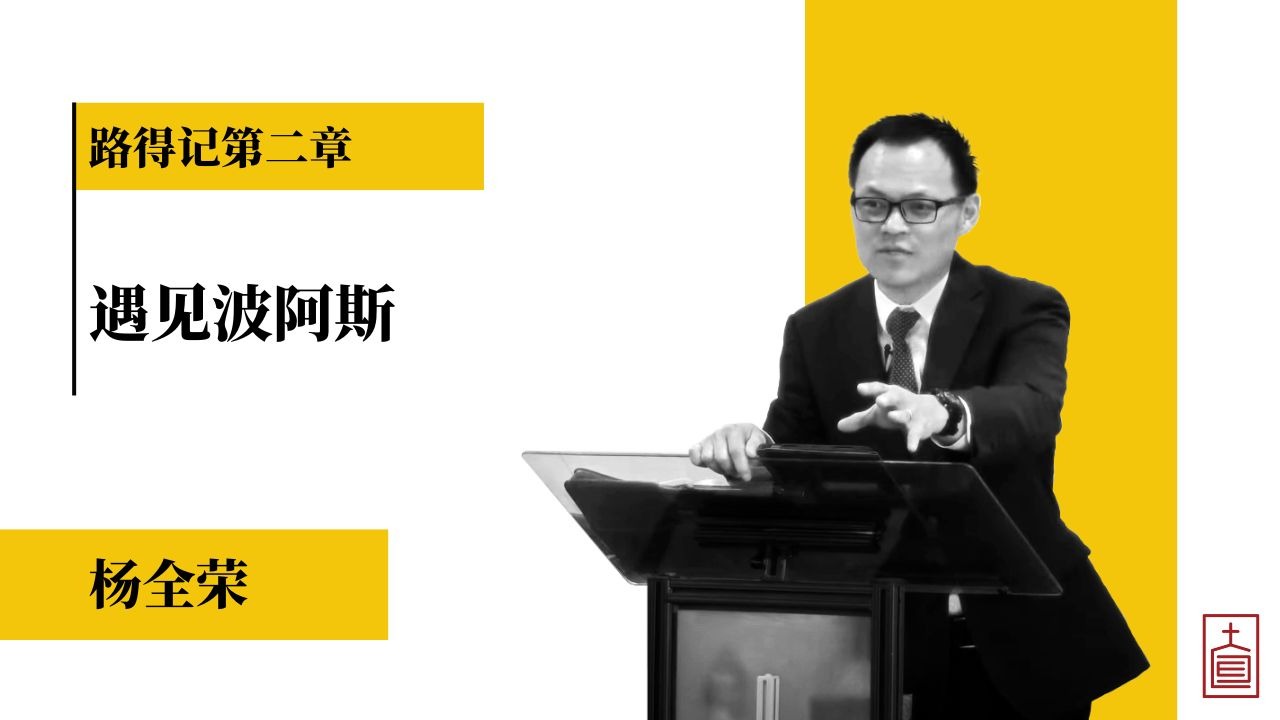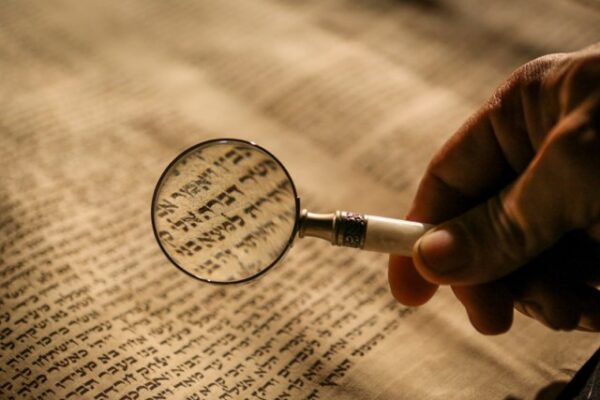The Ending Genealogy of Ruth
Introduction
This paper discusses the ending of Ruth. I intend to perform an analysis of the genealogy, explain why the author chose to conclude the book with this genealogy, and explore how this conclusion should influence one’s reading of the whole book. I took the conservative view that the ending is an original part of Ruth. I therefore would not engage in discussions related to whether this ending was a later addition to the book.[1]
Analysis of the Genealogy
The genealogy is linear, not a segmented or family genealogy. Many of the biblical genealogies are linear because the author intends to show God’s selection of the family line of the descendants of Abraham, through whom God would bless the nations (Gen 12:1-3). Similar genealogy is also repeated in 1 Chr 2:1-15. The difference is that 1 Chronicles’ genealogy is a family genealogy that includes other sons.
There are ten names in the genealogy, likely to follow the pattern of genealogies in Genesis (Gen 5:1-32, 11-26).[2] It is likely that some names were omitted from the list to limit the names to ten.[3] It is also possible that the author intended to contrast the ten generations that end with King David with the ten years of calamity on the family of Elimelech in Moab at the beginning of the book. The generations are connected through the verb “fathered” (yalad).[4]
Perez, who was not as well-known as Judah, was chosen to be the first on the list, probably because he was established in 4:12 and other genealogies as the son of Judah (Gen 46:12; Num 26:21). Boaz was number seven on the list, which could be a literary device to signal a parallel between Enoch in the Genesis 5 genealogy. Meaning, Boaz is a person who walked with God, like Enoch (Gen 5:22).[5] The last name is most important because Yahweh had made a covenant with David, stating that one of his descendants would be a king forever (2 Sam 7:13-16).
The genealogy starts with these words, “Now these are the generations (toledot) of Perez”, Similar patterns occurred eleven times in Genesis (Gen 2:4; 5:1; 6:9; 10:1; 11:10, 27; 25:12, 19; 36:1, 9; 37:2). In genesis, the genealogies came before the relating narrative. However, in the case of Ruth, the genealogy was presented after relating the narrative, to conclude the story of Ruth.
On the surface, the genealogy seems to conflict with two ideas in this book. First, Obed is described as the son of Naomi (4:17). Second, Boaz’s role is to redeem the line of Mahlon by marrying Ruth and to raise a son to carry on Mahlon’s name. However, in this genealogy, Obed is listed as the son of Boaz (4:21) instead of Mahlon. A study of the Bible and genealogies in the ancient Near East reveals that the structure of genealogies can be altered according to their function. In this genealogy, as well as the genealogies in 1 Chronicle chapter 2 and Matthew chapter 1, bloodline is prioritized over legal rights to show that David is the descendant of Boaz instead of Mahlon.[6]
Why the Author Conclude the Book with this Genealogy?
The primary purpose of this genealogy is to demonstrate that God had a greater purpose than to provide Ruth with a husband and Naomi with a descendant; He intended to bring forth King David through the descendants of Boaz and Ruth.
The second purpose is to connect King David to Judah and, ultimately, to Abraham. The entire bible has a metanarrative that begins with Yahweh’s covenant to Abraham, “And I will make you a great nation, and I will bless you and make your name great, so that you will be a blessing. I will bless those who bless you, and him who dishonors you I will curse, and in you all the families on the earth shall be blessed” (Gen 12:2-3). That means God would bless the nations through the descendants of Abraham. And this descendant of Abraham would be from the tribe of Judah based on Jacob’s prophecy to Judah, “The scepter shall not depart from Judah, nor the ruler’s staff from between his feet, until tribute comes to him; and to him shall be the obedience of the peoples” (Gen 49:10-11). This genealogy traces King David’s lineage to Perez, which the reader would know was the son of Judah, based on Ruth 4:12 and Genesis 38:29.
How the Ending of the Book Should Influence One’s Reading of the Whole Book?
This ending helps the reader understand how this book fits into the entire canon, therefore, how it fits in God’s plan of redemption. The ending connects the concept of the redeemer of the book to King David and God. That is because God the Father is the ultimate redeemer (Isaiah 54:4-5). His plan is to redeem His people through the descendant of Abraham (Gen 12:1-3). And He carried out His plan through His son, the descendant of Abraham and King David, the Lord Jesus Christ (Matt 1:1).[7]
Second, the ending also provides the reader with greater insight into God’s plan for the redemption of the Gentiles. The genealogy links King David’s lineage to a Moabite woman, which would have been a shock to the original Israelite readers. The author did not seem to think that having a Moabite ancestor would stain the bloodline of King David. This suggests that the author believes Yahweh accepts anyone who trusts in Him, regardless of their nationality or background. God not only provides hesed to Israel, but also to Gentiles who trust in Him.
Third, the ending also shows that Yahweh’s blessing to Boaz and Ruth was not limited to them and their immediate descendants. Boaz and Ruth did not know that Yahweh would bless them to have the most important kings in Israel’s history. Even greater still, they did not know that they would become the ancestors of the Messiah, our Lord Jesus Christ. Christian readers are encouraged to trust God when facing trials in life because God’s blessings could extend beyond their lifetime.
Conclusion
The ending genealogy is crucial in understanding the purpose of Ruth and has a significant impact on how readers interpret the overall message of the book of Ruth. Therefore, a preacher should keep significant of the genealogy in mind in his preparation of sermons on Ruth.
Bibliography
Block, Daniel Isaac. Judges, Ruth. The New American Commentary. Broadman & Holman Publishers, 1999.
Cundall, Arthur E., and Leon Morris. Judges and Ruth: An Introduction and Commentary. Tyndale Old Testament Commentaries. InterVarsity Press, 1968.
DeRouchie, Jason S., ed. What the Old Testament Authors Really Cared about: A Survey of Jesus’ Bible. Kregel Publications, 2013.
Hubbard, Robert. The Book of RUTH. New International Commentary on the Old Testament. William B. Eerdmans Publishing Company, 1988.
Longman, Tremper, III, and Peter Enns, eds. Dictionary of the Old Testament: Wisdom, Poetry & Writings. IVP Academic; Inter-Varsity Press, 2008.
McKeown, James. Ruth. The Two Horizons Old Testament Commentary. William B. Eerdmans Publishing Company, 2015.
Younger, Jr., K. Lawson. Judges, Ruth. Revised Edition. Edited by Terry Muck. The NIV Application Commentary. Zondervan Academic, 2020.
-
For a good discussion, see Hubbard, The Book of RUTH, sec. iii. Literary Criticism, C. The Genealogy. ↑
-
Block mentioned it is also the normal phenomena for near eastern genealogies to limit to ten names. Longman and Enns, Dictionary of the Old Testament: Wisdom, Poetry & Writings, 503. ↑
-
For example, Salmon was Rahab’s husband, which dates Salmon to the period of Joshua (Matt 1:5), therefore that is likely some names are missing between Salmon and Boaz. Cundall and Morris, Judges and Ruth: An Introduction and Commentary, 306. ↑
-
Block, Judges, Ruth, 734. ↑
-
I got this insight from Block. Longman and Enns, Dictionary of the Old Testament: Wisdom, Poetry & Writings, 676. ↑
-
I got this insight from Younger, Judges, Ruth, 488. ↑
-
DeRouchie made this connection in this book. DeRouchie, What the Old Testament Authors Really Cared About, 332. ↑




发表评论